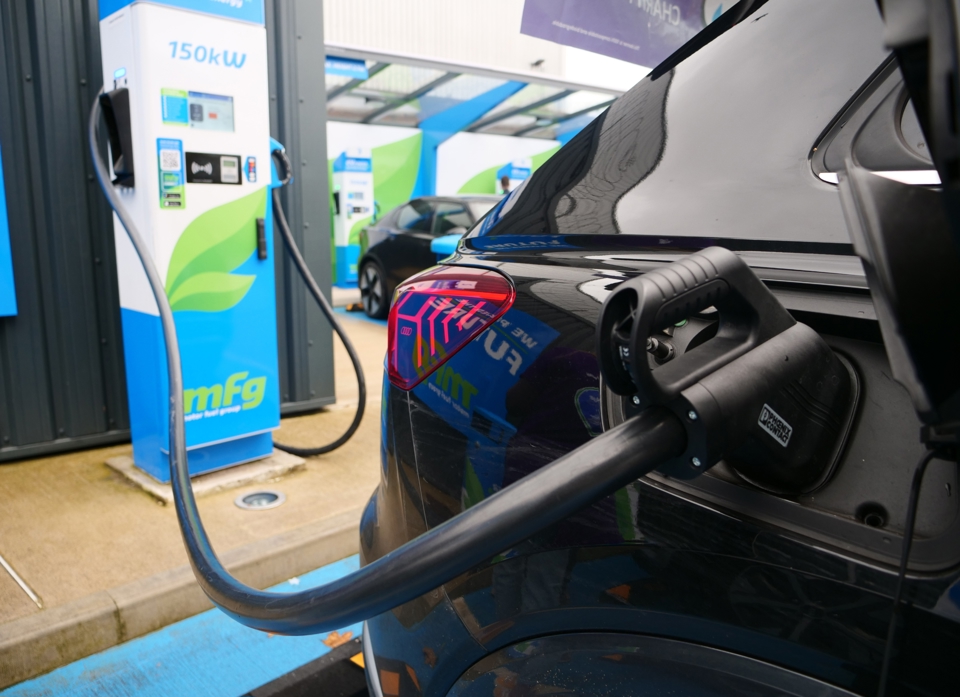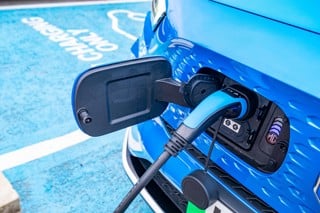The number of public electric vehicle (EV) charging devices has increased by 8,680, a 31% increase in the past year, new figures from the Department for Transport (DfT) suggest.
The number of rapid charging or above devices increased by 34%, with an additional 1,731 public devices installed.
Proportionately, the largest increase in installations was within the ultra-rapid device category, which increased by 10% in the past quarter (albeit from a lower base than other categories), accounting for 211 charging devices.
Ultra-rapid charging devices are still the smallest overall category with just 2,295 devices.
Proportionately, the smallest increase in charging devices installations was in the slow charging devices categories, with an increase of 5% or 417 charging devices.
Fast charging devices are still the most common category to be publicly installed, growing by 8% or 1,509 devices.
In terms of power output, slow charging devices represents 3 kilowatts (kW) to 6 kW; fast chargers deliver from 7kW to 22kW; rapid charging devices offer from 25kW to 100kW; and ultra-rapid charge points are classed as 100kW-plus.
Jon Lawes, managing director of Novuna Vehicle Solutions, said: “With 34% more chargers installed than the previous year, 2022 was a record-breaking year for public electric vehicle charge point installation. But the reality is, when it comes to delivering adequate EV charging infrastructure in the UK, we've still got a very long way to go to match demand.
"The fact remains that the UK has fewer than 38,000 public EV chargers in the ground, a feat that has taken over a ten-years to accomplish.
“To meet the Government's target of 300,000 charge points by 2030, the UK will need 30,000 devices installed every year for the next seven years. That’s a tenfold increase over the previous decade. And even if we achieve this goal, the ratio of EVs to chargers will still increase to 54:1 if only half of the population is driving an EV by that time.”
The most common location category for charging devices is ‘destination with 18,321 charging devices or approximately half of all publicly available charging devices.
‘On street’ charging devices is the second largest category accounting for 32% of charging devices or 11,996.
However, Lawes said: “Charging anxiety isn’t going away. Fundamentally, sustaining the level of EV adoption we’ve achieved to date to become more mainstream by the deadline requires a radical transformation of public charger provision if we are to successfully navigate what is already a bumpy road ahead to 2030.”
The AA is also concerned that the infrastructure is not keeping pace with EV sales and is calling for interim targets as the Government aims to install 300,000 publicly available charge points by 2030.
Jack Cousens, head of roads policy for the AA, said: “New EVs are flying off the factory floor, but we desperately need charge point installations to keep pace with an ever-growing demand.
“With a target of 300,000 publicly available charge points by 2030 and just 37,055 installations in place, more focus is needed to accelerate the nation’s charging infrastructure.
“We urge the Government to set marker post targets in place so drivers can see the progress is being made while giving those nervous to switch the confidence to do so.”
Uneven geographical distribution
There is an uneven geographical distribution of charging devices within the UK.
Some UK local authorities have bid for UK Government funding for charging devices, and others have not.
Most of the provision of this infrastructure has been market-led, with individual charging networks and other businesses (such as hotels) choosing where to install devices.
London and Scotland had the highest level of charging provision per 100,000 of population, with 131 and 69 devices per 100,000 respectively.
In comparison, the average provision in the UK was 55 per 100,000.
Northern Ireland had the lowest level of charging device provision in the UK, with 19 devices per 100,000, followed by the North West and Yorkshire and the Humber with 31 and 36 devices per 100,000 respectively.
Plans for the funding allocation include replacing 100 fast chargers; the equivalent of 200 charge points; upgrading 20 unreliable fast chargers to rapid chargers, more than doubling the existing capacity; and introducing five high-power charging hubs in key locations, which can charge multiple vehicles at the same time.
Scotland had the highest rate of rapid device provision of 17.3 rapid or quicker devices per 100,000, while the average provision in the UK was 10.3 per 100,000.
Rapid or quicker device provision was lowest for Northern Ireland with 1.4 rapid or quicker devices per 100,000.
The North West and East of England were the second and third lowest regions with 8.3 and 8.9 rapid or quicker devices per 100,000 respectively.
All regions across the UK saw an increase in total charging devices all regions across the UK saw an increase in total charging devices between October and December 2022.
Wales had the greatest increase at 17.3%, whilst East Midlands had the smallest increase at 3.3%.
London had the greatest increase in absolute number of devices at 493 devices, closely followed by Scotland at 486 devices.
Rapid charging or above devices have increased in every region in the UK.
The smallest percentage increase in the number of rapid charging or above devices was South East at 3.3%.
Wales had the largest percentage increase in rapid charging or above devices at 26.9%, corresponding to an increase of 60 rapid charging or above devices.
RAC head of roads policy Nicholas Lyes says that if public charging isn’t keeping pace with EV registrations, drivers will quickly become "disillusioned and frustrated".
He explained: "Data already shows a record number of electric vehicles per public charging point, so we strongly urge the Government to introduce annual installation targets and do whatever it takes to make it easier for operators to install new charging hubs.
“It should also be noted that rapid and ultra-rapid chargers currently account for just a fifth of all the network and are growing at a slower rate.
"If people are to make longer journeys quickly and easily, we need to eradicate the rapid charging ‘deserts’ that exist and make the fastest possible chargers available much more widely.”
Planning law change needed
Tom Hurst, UK lead at Fastned, said: “Drivers will be pleased that more charging options are arriving each day, but we must go further.
“A vital way to accelerate the transition is through reform of the planning permissions process for charging stations.”
He continued: “Charge point operators (CPOs) are ready to invest millions in the UK, but cumbersome regulations are slowing the rollout down and providing a worse charging experience for drivers.
“With up to 24 months between initial conversations and opening a new site, stations can only open as quickly as local councils and planning officers allow.
“That means now is the opportune moment for the UK to trial a ‘trusted provider status’ programme, to reward CPOs who build quality sites and connect local communities up and down the UK.”
> Interested in comparing electric vehicle data? Check out our EV tool.
> Interested in ensuring the efficient use of EVs. Check out our dedicated editorial sections: Insight & policy | EV news | Charging & infrastructure | Costs & incentives | Benefit-in-kind | EV case studies | EV road tests





















Login to comment
Comments
No comments have been made yet.